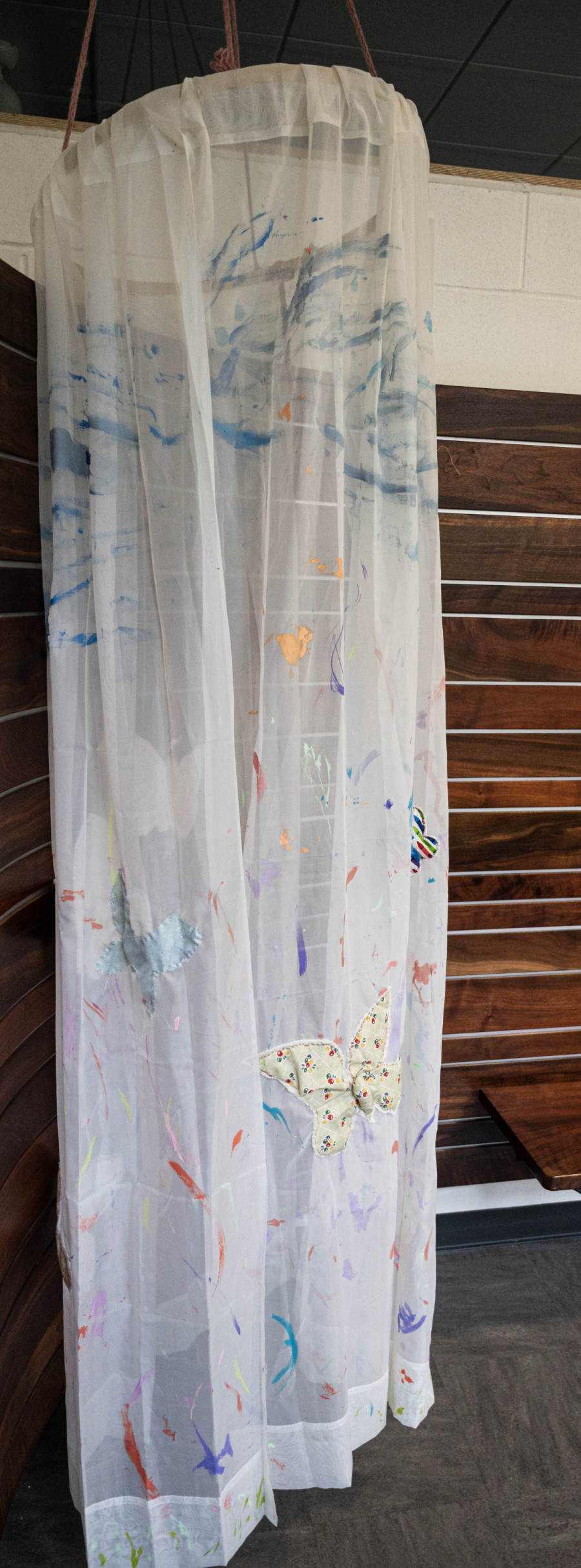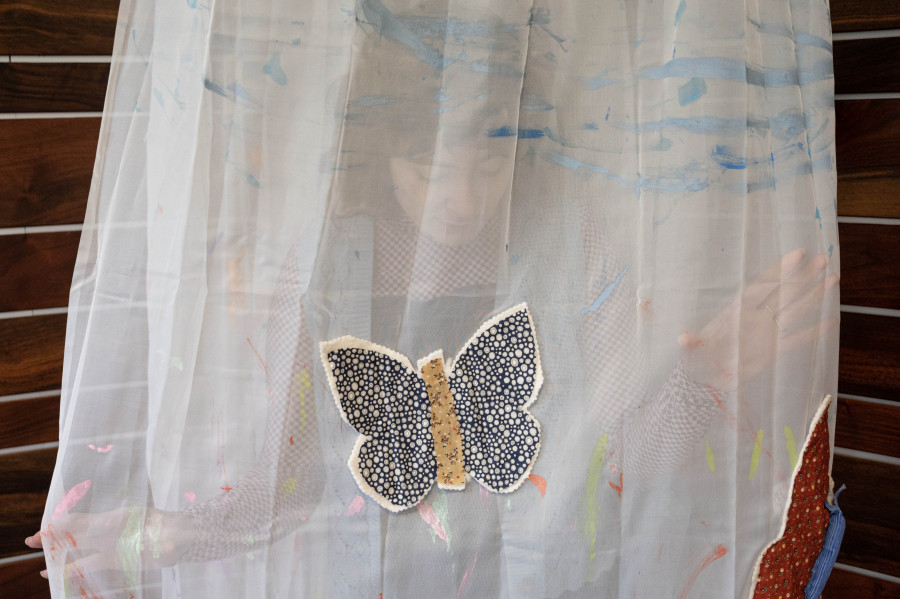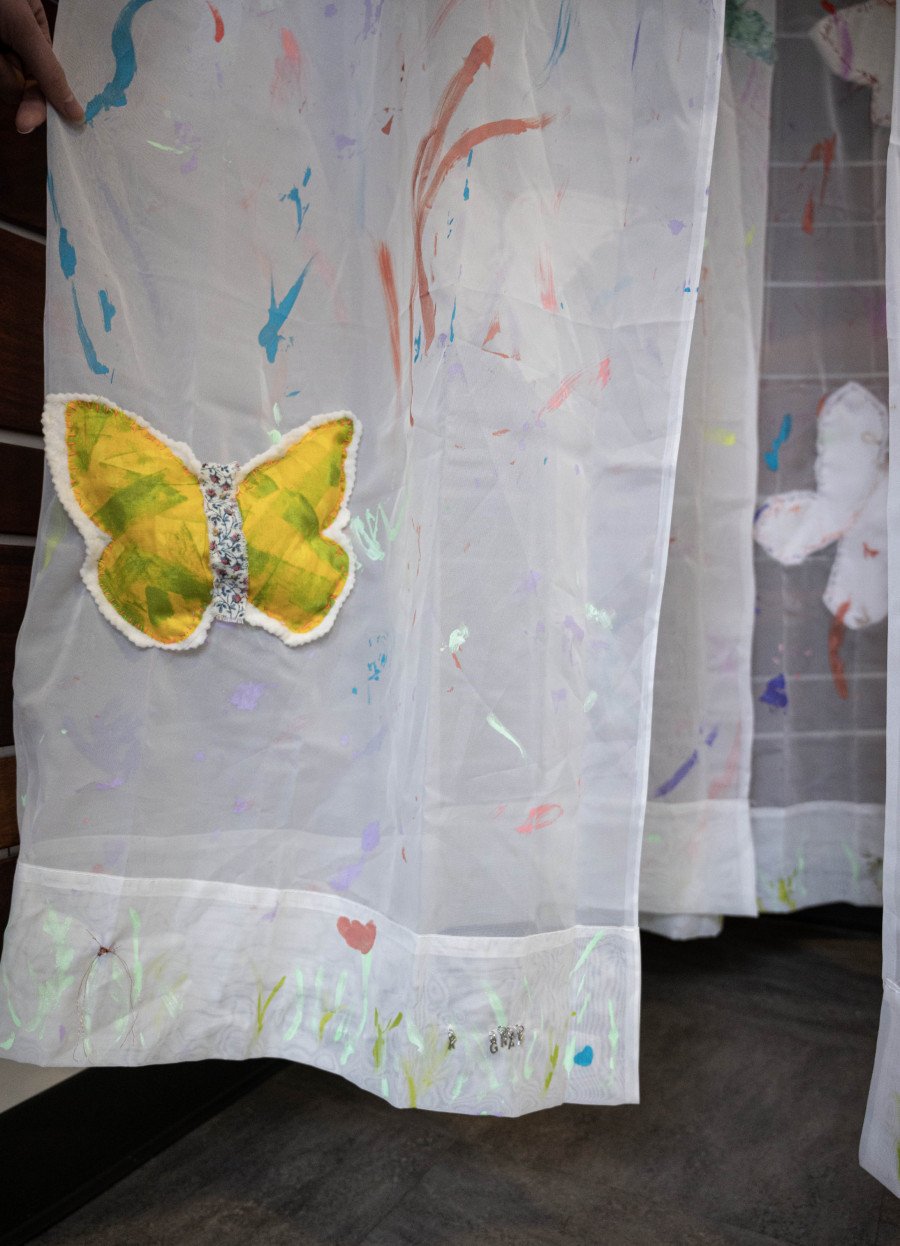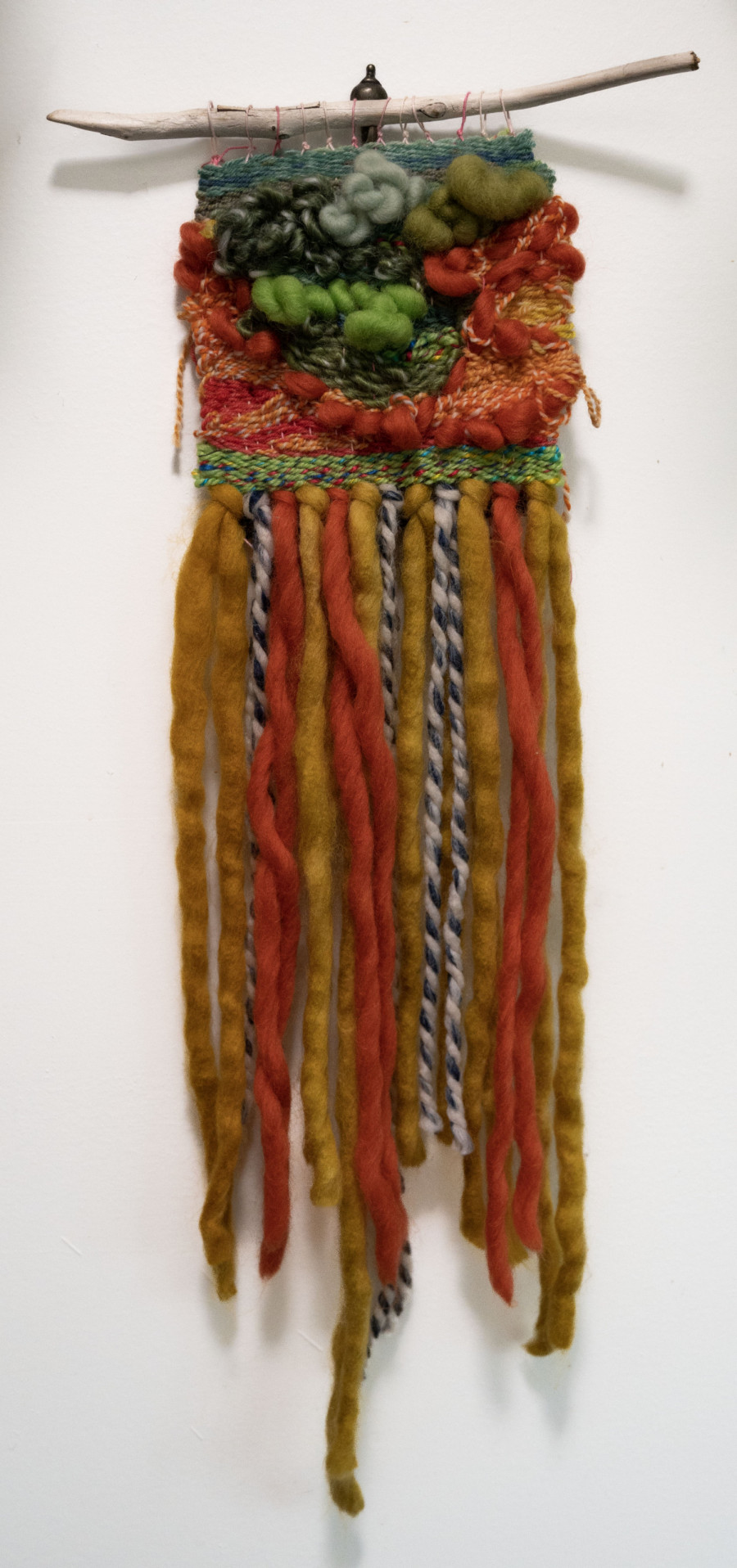Kaylynne G.
Kaylynne Gray has found joy and meaning in creative expression for as long as they can remember— with roots in theater and dance movement. A lifelong need to adorn their surroundings, noticing the small marvels of beauty found within nature, and a crafty spirit informed their journey to be able to call themselves “an artist”. Finding inspiration in unexpected materials, and inviting viewers to engage with art objects are the common threads for Kaylynne’s creative work. While they can best be described as an “artistic dabbler”, forever curious about trying new materials or techniques, Kaylynne’s focal points in art-making include collage, art books, and fiber arts, as well as three-dimensional assemblage.
The artist would like to express their heartfelt gratitude to the creative mentorship of Ari Burford, Una Kim, and the Independent Publishing Resource Center of Portland (IPRC), who have supported and creatively nurtured the artist in a profound and enduring capacity.
Artist Statement
“Unconditional Room”
Navigating institutions (including counseling and art therapy training) as a neurodivergent person has meant adapting to spaces, and moving between them, the masking that is required has layers that can be shed, or must be added. The idea of coping mechanisms and self-soothing techniques has become an area of interest for me—- the tools that we utilize in our resilience, to find enough peace for ourselves in order to reorient to safety. In my most challenging moments, the joy of creative expression, in so many forms, has kept me tethered to my emotional and physical being.
Queer aesthetics of softness, of performance and resistance, have deeply informed my creative work. I owe an immense wellspring of gratitude to the Queer creative mentors and community spaces that have welcomed me, and allowed me to expand into Being, to find belonging in my bones. It is no coincidence that Unconditional Room evokes much of the textures, motifs, and tenderness of those spaces. As I lean into new opportunities to serve my community— as an intern at a counseling center that celebrates Queer and Trans individuals, relationships, and families— I’ve found a renewed curiosity in thinking about Queer spaces. Blurring the lines between art and craft, between public and private, I wanted to offer an immersive and playful “Third Space” experience, for guests to the exhibit.
What I appreciate about this piece, Unconditional Room, is that it does not feel complete or entirely finished to me; just as my identity as an art therapist is continuing to develop, the Unconditional Room will continue to grow with me. As I sit within the Room, experiencing this small pod of self-soothing in the context of another space, the changes in light and shadow Room’s new temporary home offer continue to inspire ideas. For now, it is resting, in its most fully developed form, and I hope that viewers are able to take space for themselves to be held within the Unconditional Room, to appreciate all of the coping mechanisms, survival strategies, and transformative spaces that have brought you to the present moment. To honor your own resilience, and the past versions of yourself that have helped along the way.
“Hammock in The Woods”
Identifying meaningful practices for self-care has been so important as I move along the path of art therapy training. Defining and deconstructing the term “self-care” in order to understand what this means for me has been an integral piece of this process.
As I consider the space that I hold for others, a space to feel supported while in session, I have also found myself reflecting more often on the spaces where I feel held. Grappling with this idea has informed both of my pieces shared in this exhibit. One such invaluable space, especially as I navigate the growth, grief, loss, and learning that the last four years have held for me, has been the deeply restorative comfort I find while resting in my hammock in the woods. Enveloped in warm yellow-orange nylon, with my body held by the strength of two trees, often with a full canopy of tall tree friends towering above me… I know deeply and fully that I am safe. When I am asked to create an image of “my safe place”, as many of us who have engaged in art therapy as clients or clinicians are likely familiar, this tends to be the image that I gravitate to.
Working within the contained holding space of a weaving loom, immersed in process and repetitive movement, embracing the sensory, tactile elements of the fiber, helps to settle my mind. Combining two of the most immediately-regulating ways that I cope with stress made sense to me. Additionally, using soft wool fibers to create this image felt like the truest form in which to honor the softening I’m able to feel, physically and emotionally, when I’m being held by my hammock, in the woods.
-
 Unconditional Room
Unconditional RoomKaylynne Gray
-
 Unconditional Room 2
Unconditional Room 2Kaylynne Gray
-
 Unconditional Room 3
Unconditional Room 3Kaylynne Gray
-
 Hammock in The Woods
Hammock in The WoodsKaylynne Gray
Art Therapy is located in room 326 of Rogers Hall on the Graduate Campus.
MSC: 86
email ctsp@lclark.edu
voice 503-768-6060
fax 503-768-6065
Chair Cort Dorn-Medeiros
Art Therapy
Lewis & Clark
615 S. Palatine Hill Road MSC 86
Portland OR 97219